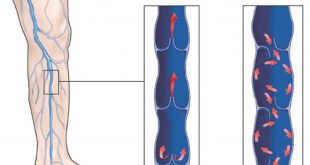While attending the Global Exchange Health Conference in Orlando recently, a recurrent theme centered around the body’s response to trauma. What caught my attention was how trauma was broadly defined as events, whether “major/life-threatening or an accumulation of everyday occurrences,” ultimately resulting in one feeling unsafe. The body’s response leads to various manifestations encompassing the mind, body, and soul. I’ve found that trauma, understood in this sense, is often at the core of most mental health and substance use disorders.
Listening to sections of talks brought me back to my days as a medical student studying physiology and anatomy. The focus on the 10th cranial nerve, the vagus nerve, was particularly engaging. I found it enlightening to “relearn” the functional application of the body’s response to trauma through this nerve’s reactions to various stimuli.
The vagus nerve is often referred to as “the information highway” of the body, running from the brainstem and connecting to virtually every organ. It plays a significant role in the autonomic nervous system, comprising the sympathetic system, which reacts to perceived danger, and the parasympathetic system, which restores the body to a state of calmness or baseline.
Trauma deeply impacts the body’s parasympathetic response, disrupting the intricate balance of the autonomic nervous system. In instances of trauma, the body’s natural response, governed by the parasympathetic nervous system, can become dysregulated. This dysregulation often leads to hyperarousal or dissociation, manifesting as anxiety, panic attacks, and/or numbing responses.
At its core, Polyvagal Theory, proposed by Dr. Stephen Porges, elucidates the complex interplay between the autonomic nervous system, social behavior, and emotional regulation. Porges proposed that individuals’ bodies automatically and subconsciously read and interpret signals for potential dangers. If the body perceives an ongoing dangerous or unsafe setting, maladaptations occur for survival. This theory highlights three evolutionary stages of the nerve’s function, delineating how these stages correlate with different states of social engagement, fight-or-flight responses, and shutdown responses. Focusing on the role of the vagus nerve in regulating physiological states and its impact on our emotional and behavioral patterns helps in understanding and treating various mental health issues, stress responses, and trauma-related experiences.
Polyvagal theory-based exercises aim to optimize the regulation of the body’s physiological state. One main goal is to shift the body’s learned response from protective/survival mode to one that allows mobilization and openness to social engagement. Creating a feeling of safety and security allows a person to return to homeostasis and balance within their surroundings and life. Many exercises are based on methods to “strengthen the vagus nerve,” enhancing the body’s automatic response and enabling a quicker return to a state of calm following an unfamiliar or stressful situation. Techniques include deep breathing, controlled exhalation, applying cold water to the body, mindful physical activity, vocalization, recalling pleasant memories, engaging in playful experiences, being in a calm and soothing environment, and safe and sound protocol sessions.
As a self-proclaimed forever student, it was a wonderful “treat” for me to immerse myself in a conference that recognized the significance of mental health, wellness, and addiction. Recently released data from SAMHSA (Substance Abuse and Mental Health Services Administration) underscores the intricate connection between mental health and substance use disorders, noting that in 2022, approximately 9.5 million adults had both a mental health disorder and a substance use disorder in the United States. Holistic treatment approaches, combined with evidence-based therapies such as Cognitive Behavioral Therapy (CBT) and Dialectical Behavior Therapy (DBT), offer a comprehensive pathway to healing and recovery. These approaches are well respected in the therapeutic community to address target symptoms. However, with an appreciation for the holistic nature of the disease process, the inclusion of approaches such as Polyvagal Theory provides an opportunity to address the underlying nervous system dysregulation, often hindering recovery and contributing to the suffering and pain that many experience.
855-452-3683 | kimberlycenter.com
 Southwest Florida's Health and Wellness Magazine Health and Wellness Articles
Southwest Florida's Health and Wellness Magazine Health and Wellness Articles

